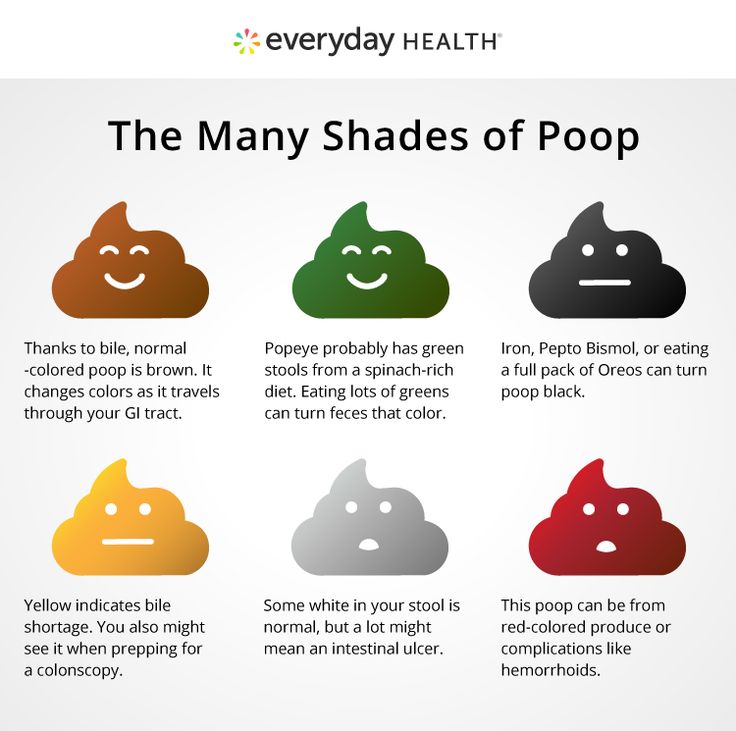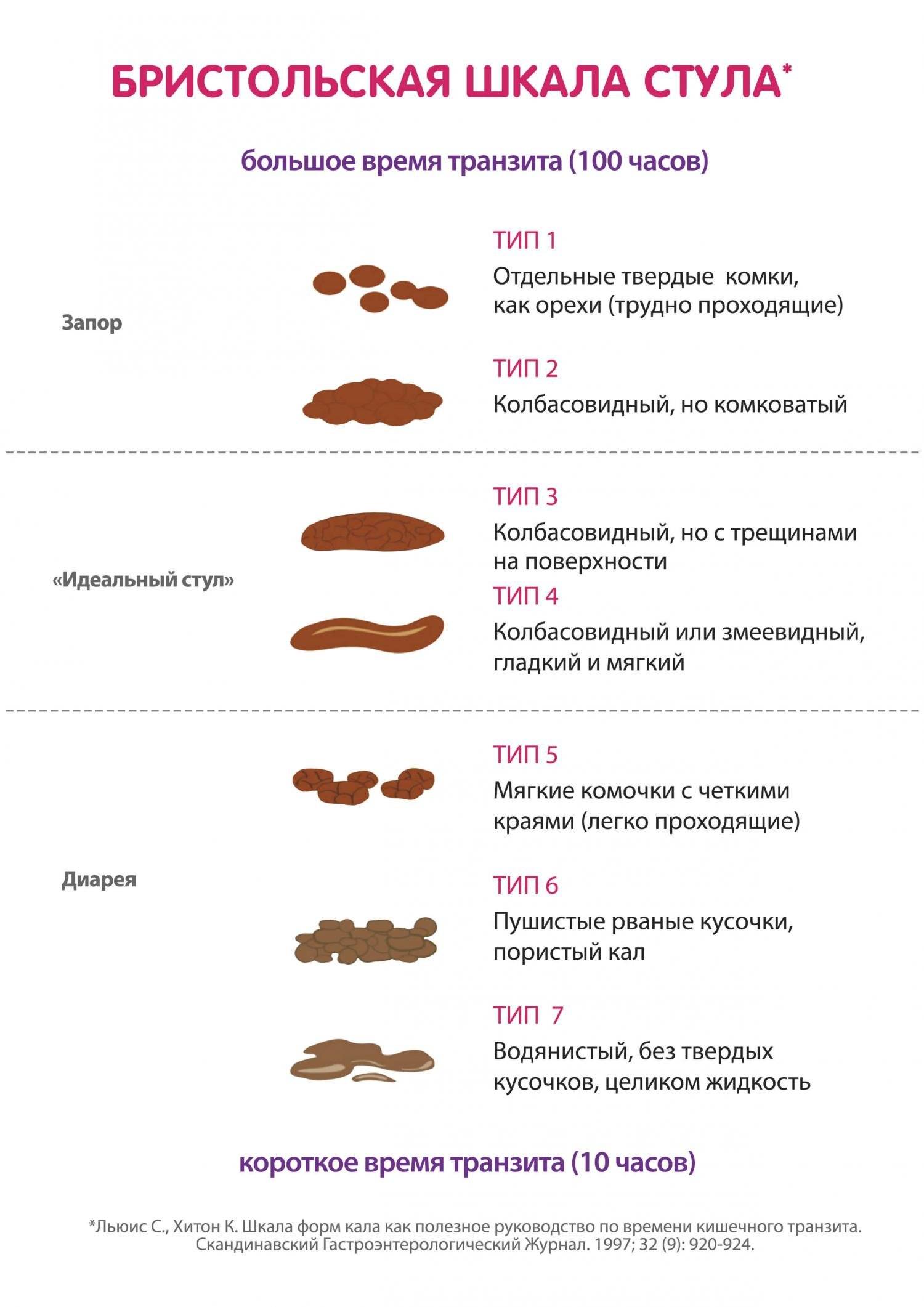The color of feces. Decoding Stool Colors: What Your Poop Reveals About Your Health
How do different poop colors indicate various health conditions. What causes green, yellow, white, black, or red stool. When should you be concerned about changes in stool color.
The Rainbow of Stool Colors: Understanding What They Mean
The color of your stool can provide valuable insights into your digestive health and overall well-being. While variations in poop color are often harmless and related to diet, certain hues may signal underlying health issues that require attention. Let’s explore the spectrum of stool colors and what they might indicate about your body’s functioning.
Brown: The Baseline of Healthy Stool
Brown is the most common and typically healthy color for stool. This hue results from the interaction between bile and your diet as it passes through your digestive system. Bile, a yellowish-green fluid produced by the liver, undergoes chemical changes during digestion, ultimately turning brown. This process gives feces its characteristic color.

What causes brown stool?
- Normal digestion of a varied diet
- Proper bile production and flow
- Adequate transit time through the intestines
Is brown stool always healthy? While brown is generally a good sign, the consistency and frequency of bowel movements are also important factors in assessing overall digestive health.
Green Poop: Not Always a Cause for Concern
Green stool can be alarming, but it’s often harmless and dietary-related. In some cases, it may indicate faster-than-normal digestion or an imbalance in gut bacteria.
Common causes of green stool:
- Consuming green leafy vegetables (e.g., spinach, kale)
- Ingesting food with green coloring
- Taking iron supplements
- Experiencing diarrhea, which can prevent bile from breaking down completely
Should you worry about green poop? Generally, no. If green stools persist or are accompanied by other symptoms like abdominal pain or fever, consult a healthcare professional.
Yellow Stool: Potential Digestive Issues
Yellow stools, especially when greasy and foul-smelling, may indicate problems with fat absorption or certain digestive conditions.

Possible reasons for yellow stool:
- Celiac disease
- Giardiasis (intestinal parasite infection)
- Pancreatic insufficiency
- Gallbladder issues
Is yellow stool normal in infants? Yellow, seedy stools are common in breastfed babies and usually not a cause for concern. However, in adults, persistent yellow stools warrant medical evaluation.
White, Pale, or Clay-Colored Stool: A Potential Red Flag
Light-colored or clay-like stools can indicate a lack of bile in the stool, which may suggest more serious health issues.
Causes of pale or clay-colored stool:
- Liver disease (e.g., hepatitis)
- Bile duct obstruction
- Gallstones
- Pancreatic cancer
- Certain medications (e.g., bismuth subsalicylate)
When should you seek medical attention for pale stools? If you experience persistent light-colored stools not related to medication use, consult a doctor promptly, as it may indicate a serious underlying condition.
Black Stool: Distinguishing Between Benign and Serious Causes
Black stools can range from harmless dietary effects to signs of internal bleeding. It’s crucial to identify the underlying cause.

Benign causes of black stool:
- Consuming black licorice
- Eating large quantities of blueberries
- Taking iron supplements
- Using bismuth subsalicylate medications
Serious causes of black stool:
- Upper gastrointestinal bleeding
- Stomach ulcers
- Esophageal varices
- Gastric cancer
How can you tell if black stool is caused by bleeding? Black, tarry stools with a distinct foul odor are often indicative of upper GI bleeding and require immediate medical attention.
Red or Reddish Stool: Benign Dietary Causes vs. Medical Concerns
Red or reddish stools can be alarming but are often related to diet. However, they can also signal lower gastrointestinal bleeding in some cases.
Common dietary causes of red stool:
- Beets
- Red food coloring
- Tomato-based products
- Red gelatin desserts
Medical causes of red stool:
- Hemorrhoids
- Anal fissures
- Inflammatory bowel disease (e.g., Crohn’s disease, ulcerative colitis)
- Colorectal cancer
How can you differentiate between dietary and medical causes of red stool? If the red color persists after eliminating red foods from your diet or is accompanied by pain, fever, or changes in bowel habits, seek medical evaluation.

Orange Stool: Dietary Influences and Potential Health Implications
Orange stools are less common but can occur due to dietary choices or certain health conditions.
Possible causes of orange stool:
- Consuming foods high in beta-carotene (e.g., carrots, sweet potatoes)
- Eating artificially colored foods or drinks
- Taking certain medications (e.g., rifampin)
- Bile duct obstruction
- Celiac disease
Should orange stool be a cause for concern? Occasional orange stools due to diet are generally harmless. However, persistent orange stools accompanied by other symptoms may indicate underlying health issues and should be evaluated by a healthcare provider.
When to Seek Medical Help for Stool Color Changes
While most stool color changes are benign and temporary, certain situations warrant medical attention.
Signs that indicate you should consult a doctor:
- Persistent changes in stool color lasting more than a few days
- Black, tarry stools not explained by diet or supplements
- Bright red blood in the stool
- White or clay-colored stools
- Stool color changes accompanied by abdominal pain, fever, or significant changes in bowel habits
How quickly should you seek medical attention for concerning stool colors? For black, tarry stools or bright red blood in the stool, seek immediate medical care. For other persistent color changes, schedule an appointment with your healthcare provider within a few days.

The Role of Diet in Stool Color Variations
Diet plays a significant role in determining stool color. Many foods and supplements can temporarily alter the appearance of your feces without indicating a health problem.
Foods that commonly affect stool color:
- Green vegetables (green)
- Beets (red or reddish)
- Blueberries (black or dark blue)
- Carrots and sweet potatoes (orange)
- Licorice (black)
Supplements and medications that can change stool color:
- Iron supplements (black or dark green)
- Bismuth subsalicylate (black)
- Antibiotics (various colors)
How long do dietary-induced stool color changes typically last? Most dietary-related color changes resolve within 48-72 hours after the food or supplement is eliminated from the diet.
Understanding Stool Consistency and Its Importance
While color is an important aspect of stool health, consistency also provides valuable information about digestive function.
The Bristol Stool Scale:
The Bristol Stool Scale is a medical tool used to classify stool into seven types based on consistency:

- Type 1: Separate hard lumps (severe constipation)
- Type 2: Lumpy and sausage-like (mild constipation)
- Type 3: Sausage-shaped with cracks on the surface (normal)
- Type 4: Smooth, soft sausage (ideal stool)
- Type 5: Soft blobs with clear-cut edges (lacking fiber)
- Type 6: Mushy consistency with ragged edges (mild diarrhea)
- Type 7: Entirely liquid (severe diarrhea)
What does your stool consistency indicate about your digestive health? Types 3 and 4 are considered normal and healthy. Persistent occurrences of other types may suggest digestive issues or dietary imbalances.
The Gut Microbiome and Its Influence on Stool Characteristics
The trillions of microorganisms residing in your digestive tract, collectively known as the gut microbiome, play a crucial role in determining stool characteristics.
How the gut microbiome affects stool:
- Color: Certain bacteria can influence stool pigmentation
- Consistency: Microbial composition affects water absorption in the colon
- Odor: Bacterial fermentation byproducts contribute to stool smell
- Frequency: Gut bacteria impact transit time through the intestines
Can probiotics improve stool health? Some studies suggest that certain probiotic strains may help regulate bowel movements and improve stool consistency in individuals with digestive disorders.
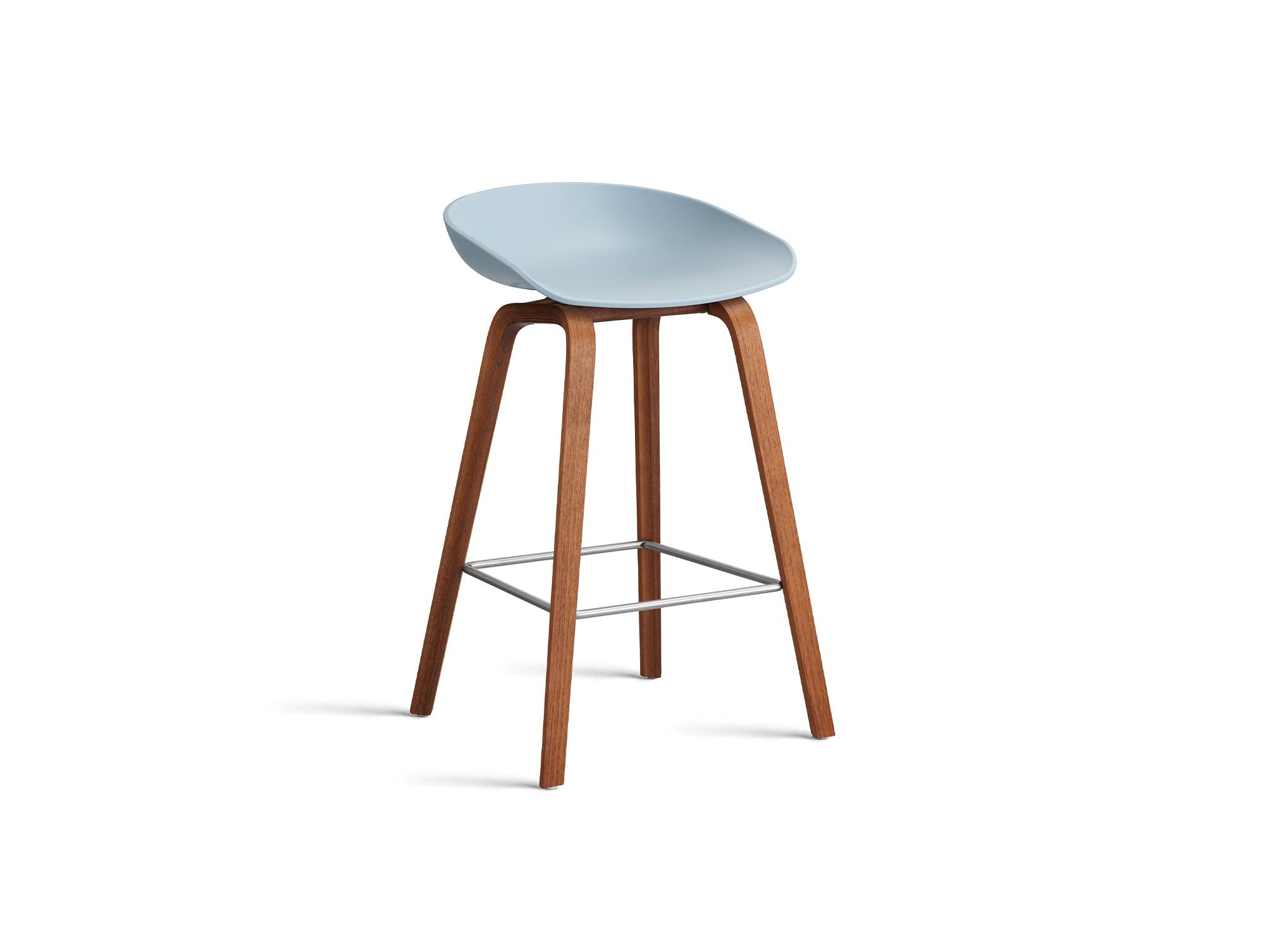
Stool Analysis: A Window into Digestive Health
When concerns arise about stool color or consistency, doctors may recommend a stool analysis to gather more information about digestive health.
Components of a comprehensive stool analysis:
- Macroscopic examination (color, consistency, presence of blood or mucus)
- Microscopic examination (presence of parasites, ova, or white blood cells)
- Chemical analysis (pH, fat content, enzyme levels)
- Microbiological culture (identification of pathogenic bacteria)
- Occult blood testing
What can a stool analysis reveal about your health? Stool analysis can help diagnose various gastrointestinal conditions, including infections, inflammatory bowel disease, malabsorption disorders, and even certain types of cancer.
Lifestyle Factors Affecting Stool Health
Beyond diet and underlying health conditions, various lifestyle factors can influence stool characteristics and overall digestive health.
Factors that impact stool health:
- Hydration levels
- Physical activity
- Stress management
- Sleep patterns
- Medication use
- Alcohol consumption
How can you promote healthy bowel movements through lifestyle choices? Staying well-hydrated, engaging in regular physical activity, managing stress, and maintaining a consistent sleep schedule can all contribute to improved digestive function and stool health.

The Link Between Stool Characteristics and Overall Health
While stool color and consistency primarily reflect digestive health, they can sometimes provide clues about other aspects of your overall well-being.
Health conditions that may manifest in stool changes:
- Liver disease
- Pancreatic disorders
- Thyroid dysfunction
- Autoimmune diseases
- Metabolic disorders
Can stool characteristics predict future health issues? While stool examination alone cannot definitively predict future health problems, persistent changes in stool color, consistency, or frequency can sometimes be early indicators of developing health conditions and should be discussed with a healthcare provider.
Monitoring Stool Health: Tips for Self-Assessment
Regular self-assessment of stool characteristics can help you stay attuned to your digestive health and identify potential issues early.
Guidelines for monitoring stool health:
- Observe stool color and consistency regularly
- Note any persistent changes lasting more than a few days
- Be aware of accompanying symptoms (e.g., abdominal pain, bloating)
- Keep a food diary if you suspect dietary influences
- Don’t hesitate to discuss concerns with your healthcare provider
How often should you assess your stool health? While daily observation isn’t necessary, being generally aware of your bowel habits and noting any significant changes is a good practice for maintaining digestive health.

The Future of Stool Analysis: Emerging Technologies and Research
Advancements in medical technology and research are opening new avenues for understanding and analyzing stool health.
Promising developments in stool analysis:
- Microbiome sequencing for personalized gut health assessments
- Artificial intelligence-assisted stool image analysis
- Metabolomics for detecting disease-specific biomarkers in stool
- Non-invasive colorectal cancer screening through stool DNA testing
- Wearable devices for continuous monitoring of digestive health
How might these advancements change the future of digestive health care? These technologies could lead to earlier detection of gastrointestinal diseases, more personalized treatment approaches, and improved understanding of the complex relationships between gut health and overall well-being.
Understanding the various colors and characteristics of your stool can provide valuable insights into your digestive health and overall well-being. While most variations are harmless and often related to diet, persistent changes or concerning symptoms should prompt a consultation with a healthcare professional. By staying attuned to your body’s signals and maintaining open communication with your doctor, you can take proactive steps towards optimal digestive health.

What Do Different Poop Colors Mean?
Written by Hope Cristol
- What Do Different Stool Colors Mean?
- Normal Poop Color
- Green Poop
- Yellow Poop
- White, Pale, or Clay-Colored Poop
- Black Poop
- Red or Reddish Poop
- Orange Poop
- When to Get Help for Poop Color Changes
- More
Different stool colors can mean different things, mostly depending on what you’ve eaten.
You’d probably notice if your poop is a different hue than normal. But what does it mean if it’s green? What about red, yellow, white, or black? Or orange?
Most of the time, minor changes in the color of your waste are due to diet. After all, we don’t eat the same thing at every meal, every day. But sometimes a color change can signal a minor health issue. In rare cases, it means something serious is wrong in your digestive system.
If the color you see before you flush worries you, call your doctor.
Poop is normally brown. The color is the result of what you eat and how much bile is in your stool.
The color is the result of what you eat and how much bile is in your stool.
Bile is a fluid your liver makes to digest fats. It starts out as a yellowish green color. But as the pigments that give bile its color travel through your digestive system, they go through chemical changes and turn brown.
Your poop can sometimes have a slightly greenish hue, or even be a more vivid green. Most of the time, green or greenish poop is normal.
Is your diet causing green poop?
Think back on what you’ve been eating. These foods and supplements can cause your poop to be green:
- Green veggies, like spinach or kale
- Green food coloring, such as in drink mixes or ice pops
- Iron supplements
Other causes of green poop
If you have green diarrhea, the color of your food may not be to blame. It’s likely that your meal moved through your gut too quickly, so the fat-digesting bile didn’t have time to turn brown.
There may be times when your poop looks more yellow than brown.
This shade is also normal for many people. It’s common for babies, especially those who breastfeed. But if you have yellow poop that looks greasy and smells very bad, it may have too much fat. That could be a sign your body isn’t digesting food properly.
Is your diet causing yellow poop?
Indirectly, your diet could cause yellow poop. If you have celiac disease, your body can’t handle a protein called gluten, which is in wheat, barley, and rye. If you have the condition and eat foods that have gluten, like many breads, pastas, and cookies, your intestines won’t work as they should. So, if you’re eating those foods, and your poop is yellow, it may be time to see a doctor.
Other causes of yellow poop
There may be other causes of yellow poop that’s greasy and smelly. If it happens to you often, tell your doctor.
Sometimes, poop may not have much color at all.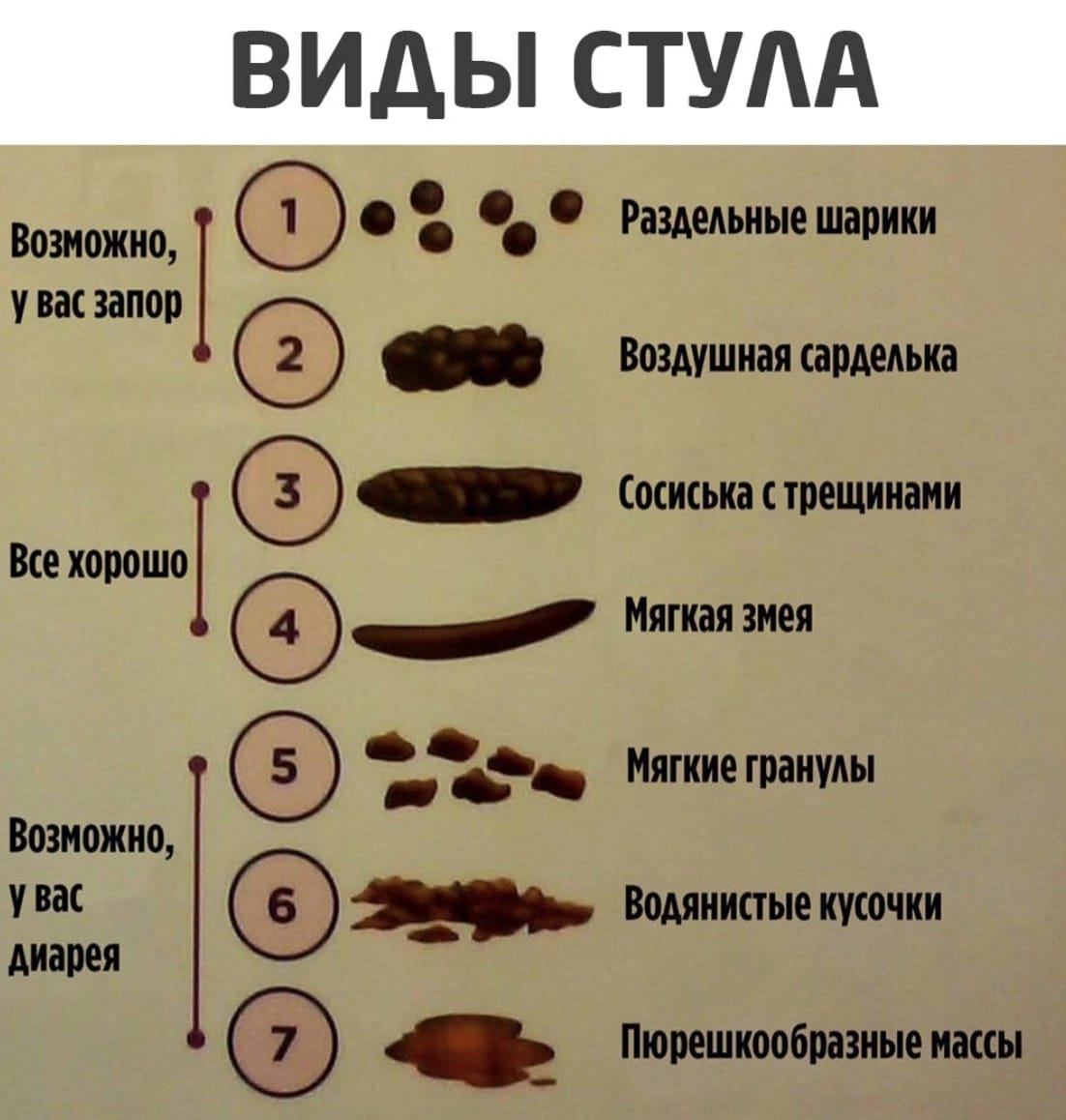
Is your diet causing pale poop?
If your poop is pale, it’s not likely directly due to a food. But medicines for diarrhea like bismuth subsalicylate (Kaopectate, Pepto-Bismol) can sometimes cause pale or clay-colored poop. So can barium, a chalky liquid you drink before you get X-rays of the upper part of your digestive tract.
Other causes of pale poop
A more serious cause is a lack of bile in your stool. (Remember, bile gives poop its brown color.) Your body makes bile in the liver, stores it in the gallbladder, and releases it into your small intestine to help digest your food. If there’s not enough of it to give your poop its typical brown color, it could be a sign of a problem along the way.
Liver disease, such as hepatitis, can keep bile from getting into your body waste. So can a blockage in the tubes (called ducts) that carry bile. This can happen because of:
- Gallstones
- A tumor
- A condition you’re born with called biliary atresia
Babies’ poop is black for the first few days after they’re born.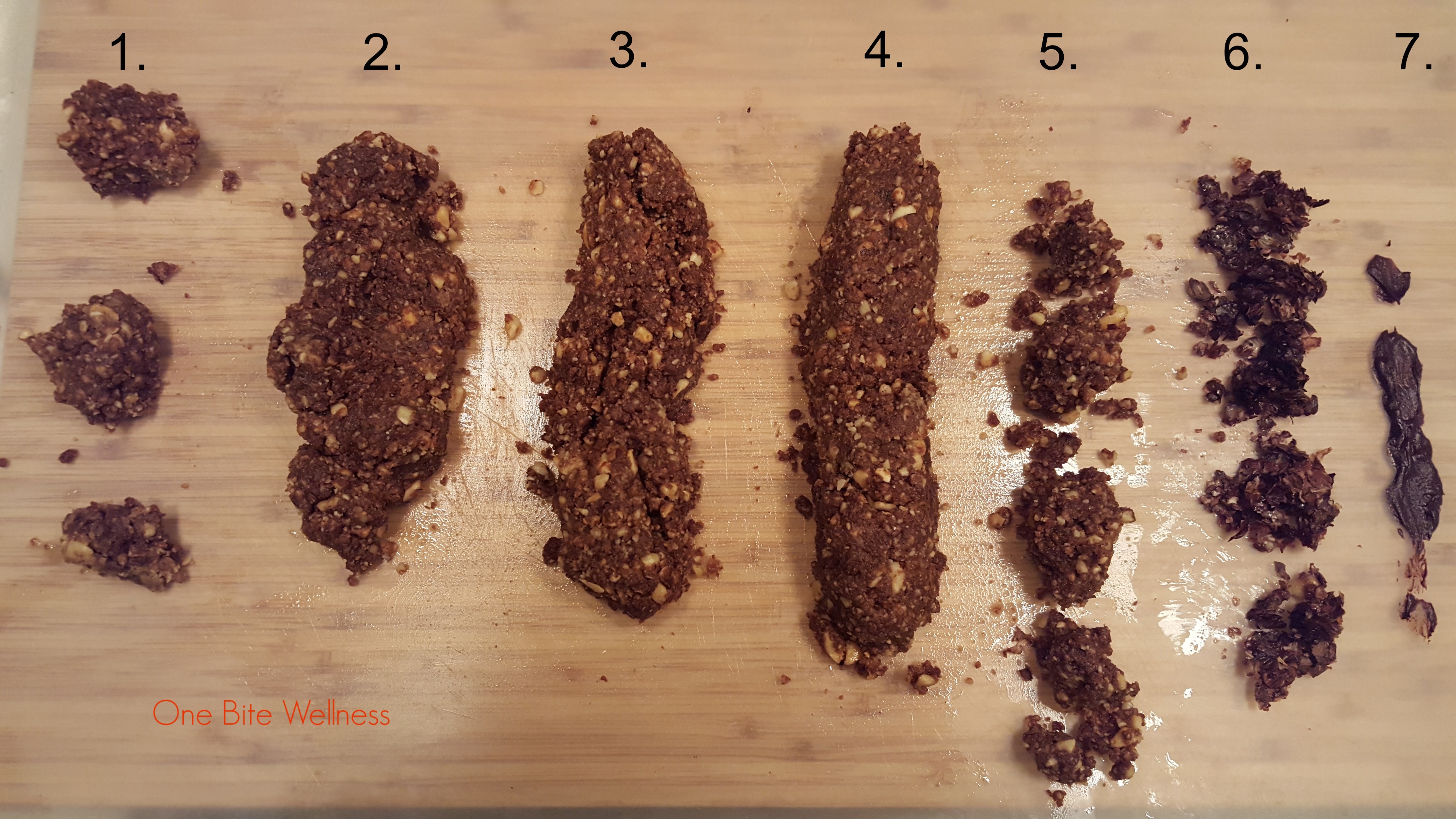 Otherwise, it may be because you ate something very dark-colored or took a medicine or supplement that causes black poop. But this color can be a sign of a more serious problem: bleeding in the upper part of your digestive tract.
Otherwise, it may be because you ate something very dark-colored or took a medicine or supplement that causes black poop. But this color can be a sign of a more serious problem: bleeding in the upper part of your digestive tract.
Is your diet causing black poop?
Foods and supplements that turn poop black include:
- Black licorice
- Blueberries
- Iron supplements
Medicines that have bismuth subsalicylate (Kaopectate, Pepto-Bismol) can also cause very dark stools.
Other causes of black poop
Poop that looks like tar is often a sign of bleeding in the digestive tract. Some causes include:
- Bleeding from stomach ulcers
- Bleeding sores in your esophagus from acid reflux
- Bleeding from noncancerous tumors in the upper GI tract
- Cancer
If you don’t think black poop came from what you ate, you need to talk to your doctor.
If you see red or reddish poop in the toilet, don’t be alarmed right away. First ask yourself if you’ve had red foods lately.
First ask yourself if you’ve had red foods lately.
Is your diet causing red or reddish poop?
Several foods can change the color of your stool to a pink or reddish color:
- Beets
- Tomato soup
- Gelatin dessert
- Red drinks
Other causes of red or reddish poop
If you don’t think your diet is the cause, the red you see may be blood. And if it’s bright red, the blood likely comes from the lower part of your digestive tract. Common causes include:
- Noncancerous tumors
- Cancer
- Inflammation in the colon, called colitis
- Growths called polyps in your colon
- Conditions caused by small sacs in the wall of the colon, called diverticular disease
- Hemorrhoids
Call your doctor if you see red that’s probably not from food you ate.
Poop can often come out the color of the food that went in, especially if you have diarrhea. If your poop has an orange hue, it’s most likely due to some orange foods.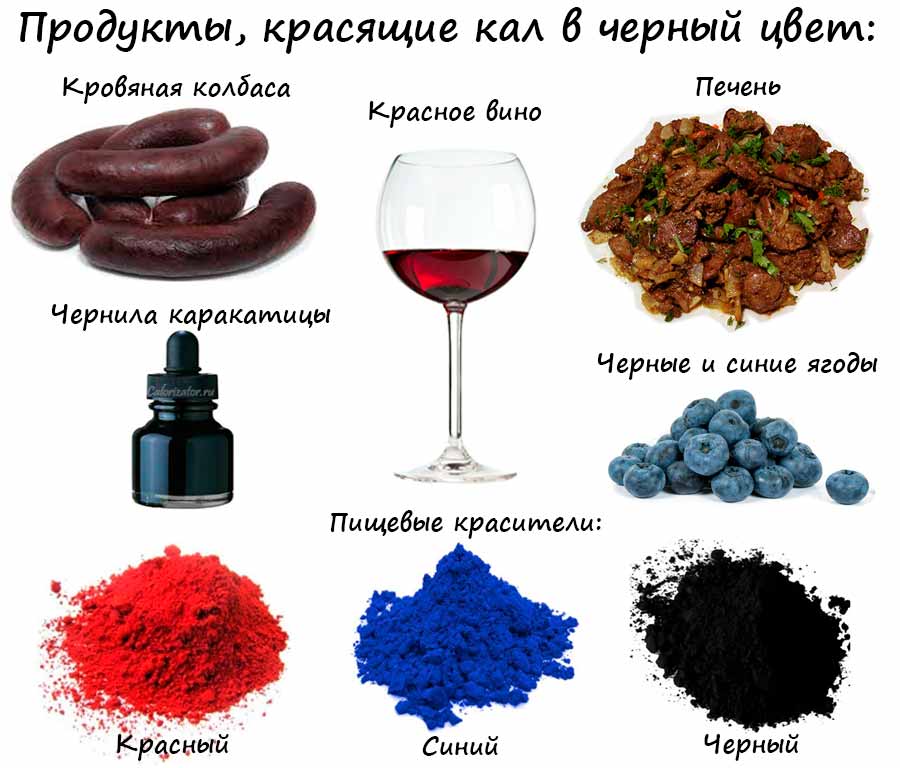
Is your diet causing orange poop?
Foods that have beta-carotene can turn your poop orange, such as:
- Carrots
- Winter squash
- Pumpkin
- Sweet potatoes
Foods with orange coloring, such as sodas, candy, or gelatin dessert, can also give your poop an orange color.
Also, antibiotics and antacids that have aluminum hydroxide in them can make your stool orange.
Other causes of orange poop
Rarely, poop can be orange if you have a problem with your liver that causes it to make less bile than normal, or a blockage that keeps bile from leaving the liver and entering your system. But usually, if this is the case, your poop will be pale or clay-colored.
Most of the time, poop that’s a different color from what you’re used to isn’t something to worry about. It’s rare for it to be a sign of a serious condition in your digestive system. But if it’s white, bright red, or black, and you don’t think it’s from something you ate, call your doctor.
Top Picks
What Do Different Poop Colors Mean?
Written by Hope Cristol
- What Do Different Stool Colors Mean?
- Normal Poop Color
- Green Poop
- Yellow Poop
- White, Pale, or Clay-Colored Poop
- Black Poop
- Red or Reddish Poop
- Orange Poop
- When to Get Help for Poop Color Changes
- More
Different stool colors can mean different things, mostly depending on what you’ve eaten.
You’d probably notice if your poop is a different hue than normal. But what does it mean if it’s green? What about red, yellow, white, or black? Or orange?
Most of the time, minor changes in the color of your waste are due to diet. After all, we don’t eat the same thing at every meal, every day. But sometimes a color change can signal a minor health issue. In rare cases, it means something serious is wrong in your digestive system.
If the color you see before you flush worries you, call your doctor.
Poop is normally brown. The color is the result of what you eat and how much bile is in your stool.
Bile is a fluid your liver makes to digest fats. It starts out as a yellowish green color. But as the pigments that give bile its color travel through your digestive system, they go through chemical changes and turn brown.
Your poop can sometimes have a slightly greenish hue, or even be a more vivid green. Most of the time, green or greenish poop is normal.
Is your diet causing green poop?
Think back on what you’ve been eating. These foods and supplements can cause your poop to be green:
- Green veggies, like spinach or kale
- Green food coloring, such as in drink mixes or ice pops
- Iron supplements
Other causes of green poop
If you have green diarrhea, the color of your food may not be to blame. It’s likely that your meal moved through your gut too quickly, so the fat-digesting bile didn’t have time to turn brown.
There may be times when your poop looks more yellow than brown.
This shade is also normal for many people. It’s common for babies, especially those who breastfeed. But if you have yellow poop that looks greasy and smells very bad, it may have too much fat. That could be a sign your body isn’t digesting food properly.
Is your diet causing yellow poop?
Indirectly, your diet could cause yellow poop. If you have celiac disease, your body can’t handle a protein called gluten, which is in wheat, barley, and rye. If you have the condition and eat foods that have gluten, like many breads, pastas, and cookies, your intestines won’t work as they should. So, if you’re eating those foods, and your poop is yellow, it may be time to see a doctor.
If you have the condition and eat foods that have gluten, like many breads, pastas, and cookies, your intestines won’t work as they should. So, if you’re eating those foods, and your poop is yellow, it may be time to see a doctor.
Other causes of yellow poop
There may be other causes of yellow poop that’s greasy and smelly. If it happens to you often, tell your doctor.
Sometimes, poop may not have much color at all.
Is your diet causing pale poop?
If your poop is pale, it’s not likely directly due to a food. But medicines for diarrhea like bismuth subsalicylate (Kaopectate, Pepto-Bismol) can sometimes cause pale or clay-colored poop. So can barium, a chalky liquid you drink before you get X-rays of the upper part of your digestive tract.
Other causes of pale poop
A more serious cause is a lack of bile in your stool. (Remember, bile gives poop its brown color.) Your body makes bile in the liver, stores it in the gallbladder, and releases it into your small intestine to help digest your food. If there’s not enough of it to give your poop its typical brown color, it could be a sign of a problem along the way.
If there’s not enough of it to give your poop its typical brown color, it could be a sign of a problem along the way.
Liver disease, such as hepatitis, can keep bile from getting into your body waste. So can a blockage in the tubes (called ducts) that carry bile. This can happen because of:
- Gallstones
- A tumor
- A condition you’re born with called biliary atresia
Babies’ poop is black for the first few days after they’re born. Otherwise, it may be because you ate something very dark-colored or took a medicine or supplement that causes black poop. But this color can be a sign of a more serious problem: bleeding in the upper part of your digestive tract.
Is your diet causing black poop?
Foods and supplements that turn poop black include:
- Black licorice
- Blueberries
- Iron supplements
Medicines that have bismuth subsalicylate (Kaopectate, Pepto-Bismol) can also cause very dark stools.
Other causes of black poop
Poop that looks like tar is often a sign of bleeding in the digestive tract. Some causes include:
- Bleeding from stomach ulcers
- Bleeding sores in your esophagus from acid reflux
- Bleeding from noncancerous tumors in the upper GI tract
- Cancer
If you don’t think black poop came from what you ate, you need to talk to your doctor.
If you see red or reddish poop in the toilet, don’t be alarmed right away. First ask yourself if you’ve had red foods lately.
Is your diet causing red or reddish poop?
Several foods can change the color of your stool to a pink or reddish color:
- Beets
- Tomato soup
- Gelatin dessert
- Red drinks
Other causes of red or reddish poop
If you don’t think your diet is the cause, the red you see may be blood. And if it’s bright red, the blood likely comes from the lower part of your digestive tract. Common causes include:
Common causes include:
- Noncancerous tumors
- Cancer
- Inflammation in the colon, called colitis
- Growths called polyps in your colon
- Conditions caused by small sacs in the wall of the colon, called diverticular disease
- Hemorrhoids
Call your doctor if you see red that’s probably not from food you ate.
Poop can often come out the color of the food that went in, especially if you have diarrhea. If your poop has an orange hue, it’s most likely due to some orange foods.
Is your diet causing orange poop?
Foods that have beta-carotene can turn your poop orange, such as:
- Carrots
- Winter squash
- Pumpkin
- Sweet potatoes
Foods with orange coloring, such as sodas, candy, or gelatin dessert, can also give your poop an orange color.
Also, antibiotics and antacids that have aluminum hydroxide in them can make your stool orange.
Other causes of orange poop
Rarely, poop can be orange if you have a problem with your liver that causes it to make less bile than normal, or a blockage that keeps bile from leaving the liver and entering your system.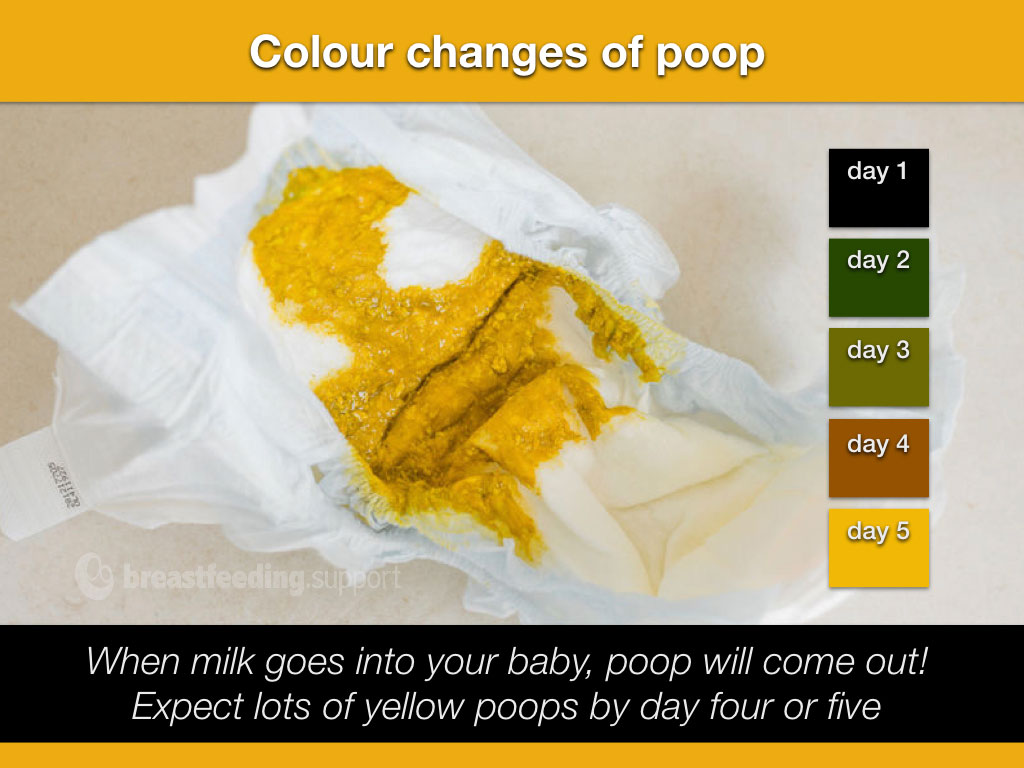 But usually, if this is the case, your poop will be pale or clay-colored.
But usually, if this is the case, your poop will be pale or clay-colored.
Most of the time, poop that’s a different color from what you’re used to isn’t something to worry about. It’s rare for it to be a sign of a serious condition in your digestive system. But if it’s white, bright red, or black, and you don’t think it’s from something you ate, call your doctor.
Top Picks
Green feces in an adult and a child
Feces: what is it
Feces (stool, feces) is the end product of digestion, which is formed in the gastrointestinal tract and excreted from the body during defecation. In fact, this is a waste material from which all substances useful for the body are squeezed out.
In fact, this is a waste material from which all substances useful for the body are squeezed out.
Fecal components:
- water: makes up up to 75% of faeces. Its main task is to dissolve toxic substances and soften the feces so that it moves freely through the intestines;
- solids: undigested plant and muscle fibers, fats, toxins, and beneficial bacteria that help break down food.
Basic properties of feces: quantity, texture, shape, color and smell. Changes in these parameters can be signs of various diseases.
The normal consistency of the feces is dense, the shape is cylindrical, the thickness is 2-4 cm. It is this feces that is called formed. The normal color of feces is brown, which can vary from light to dark shades depending on eating habits.
The color of feces can change for many reasons – from the use of coloring foods to diseases of the gastrointestinal tract, liver pathologies, intestinal infections, bleeding in the gastrointestinal tract.
Physiological causes of green stool
Normally, green stools may appear after eating certain foods and taking certain medications.
Products that color stool green
Foods that contain chlorophyll, a green pigment needed by plants for photosynthesis, can color feces green.
Foods rich in chlorophyll:
- parsley,
- celery,
- leeks,
- dill,
- broccoli,
- spinach,
- collard greens,
- green asparagus beans,
- arugula,
- watercress,
- zucchini,
- cucumbers.
Green vegetables contain chlorophyll, which can color stools
If such foods appear in the diet, then the feces may acquire a green color. At the same time, the frequency of defecation does not change, the stool is formed and does not have a putrid odor. As a rule, after a couple of days, the color of the feces returns to normal.
Also, green stool occurs after eating sweets, marmalade, jelly and other products dyed with chemical dyes.
Medicines
Drugs that contain iron can change the color of feces to green and are often prescribed to treat iron deficiency anemia.
Iron is excreted in the stool and may give feces a green color. The symptom persists during treatment, then gradually disappears.
Pathological causes of green stool
Green feces may indicate pathologies of the gastrointestinal tract, diseases of the liver and gallbladder, intestinal infections, food poisoning.
Pathologies of the liver and gallbladder
If the color of the feces turned green, and dull pains and heaviness appeared in the right hypochondrium, the work of the liver and gallbladder may have been disturbed.
Diseases of the liver and gallbladder, in which feces can turn green:
- viral hepatitis — an infectious and inflammatory disease of the liver caused by hepatitis viruses;
- biliary dyskinesia – disruption of the walls of the gallbladder and bile ducts;
- gallbladder dysfunction – a violation of emptying and filling, in which the outflow of bile from the organ is difficult;
- postcholecystectomy syndrome is a complex of symptoms that can develop after removal of the gallbladder.

As a rule, during exacerbation of diseases of the liver and gallbladder, the stool turns from green to grayish-white.
Intestinal infections
One of the causes of green stool in children and adults is intestinal infections caused by pathogens. For example, salmonellosis is an infectious disease of the digestive system, which is provoked by bacteria of the genus Salmonella.
Salmonella is a microscopic bacillus covered with long flagella that help it move
You can become infected with salmonellosis if you eat raw or undercooked eggs, meat and dairy products, as well as if you come into contact with infected pets and poultry.
Main symptoms of salmonellosis:
- high temperature;
- headache;
- weakness, aching muscles;
- abdominal pain;
- nausea, frequent vomiting;
- green feces;
- offensive stools, often watery or frothy;
- pale skin;
- plaque on the tongue.

2-3 days after the onset of the first symptoms of salmonellosis, streaks of blood and mucus may be found in the stool. The patient is worried about pain in the abdomen, painful urge to defecate.
Celiac disease
Celiac disease, or celiac disease, is a chronic inflammation of the mucous membrane of the small intestine, which occurs due to intolerance to gluten (a protein found in cereals: rye, barley, wheat).
Celiac disease – gluten intolerance, has a genetic background
Main symptoms of celiac disease:
- diarrhea;
- fetid greenish stools;
- steatorrhea – excess fat in the feces;
- weight loss;
- polyhypovitaminosis is a lack of groups of vitamins in the body.
As a rule, the first symptoms of celiac disease in women appear at the age of 30-40, in men a little later – at 40-50 years.
Green feces in children
Children in the first 2-3 days after birth excrete dark green feces – meconium. This is the norm. Then the feces lighten and acquire a light brown or yellowish tint.
This is the norm. Then the feces lighten and acquire a light brown or yellowish tint.
Children aged 1.5–2 years may also have green stools. This is possible if the child is breastfed and the mother’s diet contains a large amount of foods rich in chlorophyll (parsley, celery, leeks, dill, cucumbers, etc.).
In addition, stools may turn green when changing from one formula to another, when there is an excess of sugar or iron in the formula, when solid foods are introduced into the baby’s diet. In this case, you can adjust the diet and choose the right mixture.
If, after replacing the mixture, the feces still remain green, you need to contact a pediatrician – the reason may be a violation of the baby’s intestinal microflora.
Green feces in children older than 2 years is normal when eating foods containing chlorophyll or chemical dyes.
Pathological causes of green stool in children:
- infectious diseases of the gastrointestinal tract,
- congenital pathologies of the digestive tract.

As a rule, when it comes to pathology, in addition to green stool, the child has other symptoms.
Concomitant symptoms of gastrointestinal pathologies in children:
- temperature increase;
- chills;
- cold sweat;
- nausea and vomiting;
- poor appetite;
- abdominal pain;
- impurities of blood, mucus, pus in the feces;
- bloating;
- rash on body;
- weakness, tearfulness.
To find out the reasons for the ailment, you need to visit a pediatrician. He will carefully listen to the complaints of the child or parents (if the baby cannot yet tell about his state of health), conduct an examination and refer the patient for additional examinations: a complete blood count, a complete urinalysis, a stool test, a swab from the anus.
Complete blood count without leukocyte formula (capillary blood)
Capill. blood (+150 ₽) 21 1 day
21 bonus
210 ₽
Add to cart
1 day
Capill. blood 150 ₽
blood 150 ₽
Urinalysis
Urine 24 1 day
24 bonuses
240 ₽
Add to cart
1 day
Urine 0 ₽
Biochemical analysis of feces
Cal 172 7 days
172 bonuses
1 720 ₽
Add to cart
7 days
Cal 0 ₽
Diagnosis of diseases causing green stools
A single appearance of green stool after eating foods containing chlorophyll or chemical dyes is a normal variant.
If green stool is accompanied by unpleasant symptoms (abdominal pain, nausea, vomiting, fever, signs of intoxication), then we can talk about a serious illness. In this case, you should immediately contact a doctor – a general practitioner or gastroenterologist.
At the appointment, the specialist will interview the patient, clarify whether he is taking any medications, conduct an examination and, if necessary, refer him for additional examinations and tests.
To assess the general condition of a person and identify possible violations of the gastrointestinal tract, basic studies will help – analysis of blood, urine and feces.
Biochemistry 13 indicators
Ven. blood (+140 ₽) 193 1 day
193 bonuses
1 930 ₽
Add to cart
1 day
Ven. blood 140 ₽
Urinalysis
Urine 24 1 day
24 bonuses
240 ₽
Add to cart
1 day
Urine 0 ₽
Biochemical analysis of feces
Cal 172 7 days
172 bonuses
1 720 ₽
Add to cart
7 days
Kal 0 ₽
If the doctor suspects that the microflora has been disturbed due to pancreatitis (inflammation of the pancreas), hepatitis (inflammation of the liver) or gastritis (inflammation of the gastric mucosa), he can refer the patient to targeted studies that will help identify and eliminate the root cause of the violation of the intestinal microflora.
Pancreas
Taking (2 types, +140 ₽) 105 1 day
105 bonuses
1 050 ₽
Add to cart
1 day
Take (2) +140 ₽
Ven. blood 140 ₽
Cal 0 ₽
Lipase
Ven. blood (+140 ₽) 31 1 day
blood (+140 ₽) 31 1 day
31 bonus
310 ₽
Add to cart
1 day
Ven. blood 140 ₽
Pancreatic amylase
Ven. blood (+140 ₽) 26 1 day
26 bonuses
260 ₽
Add to cart
1 day
Ven. blood 140 ₽
Viral hepatitis B and C: molecular screening
Ven. blood (+140 ₽) 101 3 days
101 bonus
1,010 ₽
Add to cart
Ven. blood 140 ₽
Coprogram
Cal 38 1 day
38 bonuses
380 ₽
Add to cart
1 day
Cal 0 ₽
Intestinal infections can be diagnosed using tests for individual pathogens.
Salmonellosis culture (Salmonella spp.)
Ven. blood (+140 ₽) 68 4 days
68 bonuses
680 ₽
Add to cart
Ven. blood 140 ₽
Sowing for pathogens of the intestinal group (Shigella spp., Salmonella spp.)
Taking (2 types) 67 4 days
67 bonuses
670 ₽
900 04 Add to cart
Take (2) +0 ₽
Swab 0 ₽
Cal 0 ₽
If celiac disease is suspected, the doctor will refer the patient to tests that will help identify a hereditary disease and adjust the diet so as to avoid unpleasant manifestations of the disease.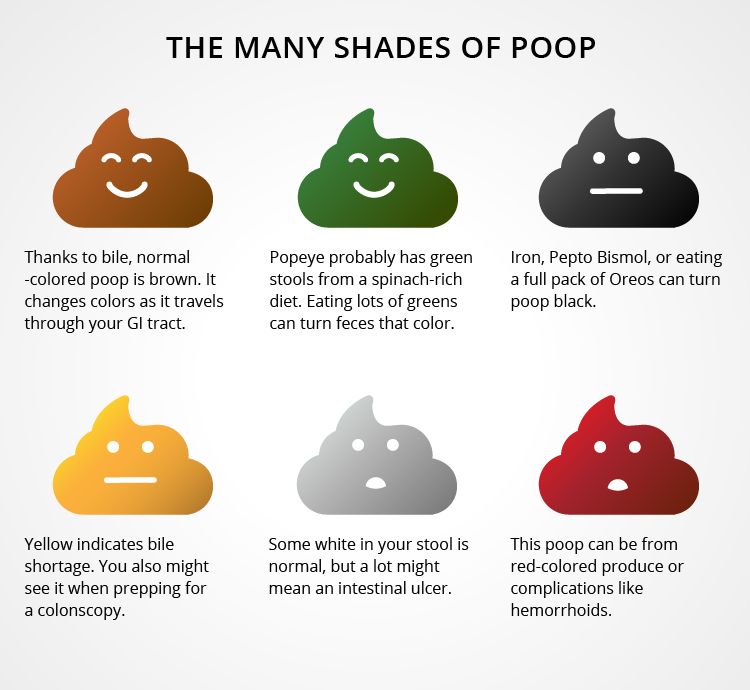
Celiac disease
Ven. blood (+140 ₽) 446 14 days
446 bonuses
4 460 ₽
Add to cart
14 days
Ven. blood 140 ₽
Celiac disease: advanced screening
Ven. blood (+140 ₽) 332 14 days
332 bonuses
3 320 ₽
Add to cart
14 days
Ven. blood 140 ₽
Treatment of diseases causing green stool
Treatment will depend on the cause of the pathology. Thus, in case of infections, therapy will be aimed at destroying pathogenic bacteria or viruses, in case of gastritis, it will be aimed at restoring the gastric mucosa.
An important component of the treatment of diseases that can cause green stool is a special diet. In the acute period, the patient is transferred to a sparing diet – pureed cereals on water, mucous soups. After recovery, the patient can gradually return to their usual diet.
A gluten-free diet is indicated for celiac disease.
Medicines used to treat diseases that cause green stool:
- sorbents help to remove toxins and bacterial agents from the body;
- antibiotics – may be indicated for severe bacterial infections.

Sources
- Ivashkin V. T. Gastroenterology. National leadership. 2018.
- Infectious diseases. National leadership / ed. N. D. Yushchuk, Yu. V. Vengerova. 2018.
- Khavkin A.I. Intestinal microecology disorders. Correction principles. 2004.
Child’s stool color – what does light, green or black stool indicate?
The characteristics of the baby chair are influenced by such indicators as age, type of feeding, and developmental features of the baby. At the same time, a change in the shade, consistency of the stool, the appearance of an unpleasant odor may indicate the presence of a particular pathology. Let’s talk about which stool changes are a variant of the norm, and which are a cause for concern.
Peculiarities of the child’s nutrition
Having noticed an unusual color of feces in a child, parents should also pay attention to the color of the urine and the general well-being of the baby. If the urine has not become more saturated, and the child is active and cheerful, then the changes are most likely associated with the food eaten the day before.:max_bytes(150000):strip_icc()/healthy-and-unhealthy-stool-89211-color-V1-9cef9502a0a5433994307575289f34c7.png)
If we are talking about a baby who feeds on mother’s milk, then it is the mother herself who should analyze the diet. In formula-fed babies, stool changes may be due to the fact that the parents decided to introduce a new formula.
In older children who eat at the same table with adult family members, unusual stools are also most often associated with eating certain foods. Calcium-rich food contributes to the staining of feces in a light color, increasing its viscosity. For example, many kids love cottage cheese with sour cream. Eaten the day before, such a snack helps to lighten and increase the viscosity of feces – it becomes like clay.
The cause of green stool in a child may be eating a large amount of green vegetables, as well as lettuce leaves. Brick-red staining is often due to the fact that the child went too far with red berries or tomatoes. Blackcurrants and blueberries can cause very dark stools.
Other causes
Pediatricians say that the appearance of light-colored feces in a child may be due to the eruption of milk teeth. The exact causes of this process remain not fully understood, but the fact remains. Young mothers should remember about this feature of the child’s body. However, if you are in doubt about a change in stool color, it is best to consult your pediatrician. Remember that the period of teething is often accompanied by an increase in susceptibility to various infections, including enteroviruses.
The exact causes of this process remain not fully understood, but the fact remains. Young mothers should remember about this feature of the child’s body. However, if you are in doubt about a change in stool color, it is best to consult your pediatrician. Remember that the period of teething is often accompanied by an increase in susceptibility to various infections, including enteroviruses.
Also, if the color of the child’s feces changes, parents should remember whether they gave him any medications the day before. Some drugs stain the stool: for example, the use of iron-containing products is associated with the appearance of greenish-black stool.
Finally, healthy children’s feces may darken and lighten periodically. If the baby’s well-being does not suffer at the same time and the color of the feces returns to normal within a couple of days, then you should not sound the alarm.
The child’s stool color has changed – maybe something is wrong?
Features of feces often indicate certain pathological processes. And sometimes a change in color, smell and other characteristics are the only symptoms that prompt a pediatrician to think about the correct diagnosis.
And sometimes a change in color, smell and other characteristics are the only symptoms that prompt a pediatrician to think about the correct diagnosis.
Dysbacteriosis
Dysbacteriosis is a disorder of the intestinal microflora. The shift in the species ratio of bacteria towards symbionts, which are normally present in small quantities, cannot but affect the properties of feces. In children suffering from dysbacteriosis, the stool becomes watery, with an admixture of a mucous character, lighter than normal. In severe cases, the feces can become frothy, acquire a sharp unpleasant odor.
These symptoms are often accompanied by pain in the abdomen, increased gas formation – the general condition of the child suffers. To solve the problem as soon as possible, you need to see a doctor.
Hepatitis
Hepatitis in children and adults may present with a characteristic greyish discolored stool. In order to exclude the presence of hepatitis in a child, when light stool appears, parents should pay attention to the color of the urine. Discolored stools, caused by a malfunction of the liver cells, are always accompanied by the release of saturated urine (the so-called “beer-colored” urine).
Discolored stools, caused by a malfunction of the liver cells, are always accompanied by the release of saturated urine (the so-called “beer-colored” urine).
If warning symptoms appear, you should not panic – only a specialist can make a diagnosis of hepatitis. But there is no need to delay visiting the pediatrician. The doctor will prescribe a diagnostic plan and give the necessary recommendations.
Pancreatitis
Many people think that only adults suffer from pancreatitis. But, unfortunately, inflammation of the pancreas can occur at any age. Cal at the same time acquires a grayish tint, an unpleasant odor. In chronic pancreatitis, the total amount of excreted feces is increased, and it itself acquires a kind of oiliness, it is poorly washed off.
In a classic attack of pancreatitis, abdominal pains of girdle nature (or localized in the navel) are also observed. There are also symptoms of dyspepsia:
- loss of appetite;
- nausea and vomiting;
- increased gas formation.

Children may also experience mild fever, pale skin, and dry mouth. An attack of pancreatitis can be triggered by excessive consumption of chocolate, cocoa, carbonated drinks, fresh vegetables.
Bent gallbladder
Bent gallbladder is a fairly common congenital anomaly. The bend of the gallbladder may be asymptomatic. Manifestations of pathology can appear after heavy consumption of food, especially fatty. Children are worried about vomiting with an admixture of bile, pain in the right side.
The bending of the gallbladder is characterized by alternating periods of constipation and diarrhea. With a pronounced inflection, the feces may become lighter than normal.
Rotavirus infection
This viral infectious disease is accompanied by intoxication (its signs are weakness, fever, general malaise) and symptoms of gastrointestinal lesions. The latter include pain, nausea, repeated vomiting, rumbling in the abdomen. At the same time, the child’s stool is plentiful, it becomes watery, frothy, has a greenish-yellow color and a pungent odor. As a rule, pathological impurities are absent or there is a small amount of mucous inclusions.
As a rule, pathological impurities are absent or there is a small amount of mucous inclusions.
Vomiting and diarrhea in children can cause severe dehydration very quickly. This condition is extremely dangerous for children, therefore, if the above symptoms appear, seek medical help immediately.
Whipple’s disease
This rare infectious disease is accompanied by damage to the lymphatic system of the small intestine and articular syndrome. Whipple’s disease occurs with marked fever, abdominal pain, flatulence, nausea, and vomiting. The stool is liquid, defecation occurs up to 10 times a day, the stool has a grayish tint and a pungent odor.
Is it necessary to go to the doctor if there is a change in the color of feces in children?
Since a change in the characteristics of the feces in a child can often be a variant of the norm, parents should act depending on the circumstances of the particular case. Attentive mothers and fathers can easily notice the connection between a change in stool and a previously eaten product or medication the day before. Even if the nature of the feces has changed for no apparent reason, but the child feels normal, it is worth observing him for 1-2 days. Perhaps the stool will normalize on its own.
Even if the nature of the feces has changed for no apparent reason, but the child feels normal, it is worth observing him for 1-2 days. Perhaps the stool will normalize on its own.
In all other cases, when a change in the color and other properties of feces is accompanied by abdominal pain, fever, nausea, pallor of the skin and any other pathological signs, it is necessary to consult a pediatrician as soon as possible. Acute diseases in children can progress at a very high rate, so refusing to consult a specialist can be deadly.
Foamy stool in an infant
Foamy stool in an infant is a sign of a deficiency in the normal intestinal microflora. Without the right amount of beneficial bacteria, the physiological process of digestion becomes impossible, and the consistency of the stool changes.
Microflora imbalance may be temporary, transient. In this case, the condition is normalized without special treatment. In more serious cases, the doctor may prescribe drugs from the group of pro- and prebiotics. Finally, dysbacteriosis in combination with foamy stools is often one of the symptoms of an intestinal infection, especially if the child complains of abdominal pain, fever, and deterioration in the general well-being of the baby.
Finally, dysbacteriosis in combination with foamy stools is often one of the symptoms of an intestinal infection, especially if the child complains of abdominal pain, fever, and deterioration in the general well-being of the baby.
Diarrhea in infants
Newborns have loose stools due to infectious and non-infectious causes.
Diarrhea of an infectious nature has the following features:
- pronounced unpleasant odor;
- foaminess;
- increase up to 8-10 times a day;
- combination with nausea and vomiting, fever.
Causes of noninfectious diarrhea in an infant include:
- lactose intolerance;
- violations of the diet by a nursing mother;
- reaction to unusual complementary foods.
Constipation in infants
Normally, a baby’s feces are soft, but constipation can occur as early as the first month. If a child of the first year of life (and especially the first four weeks) has difficulty passing feces, parents should consult a pediatrician. Constipation in an infant may be a sign of one of the pathologies:
Constipation in an infant may be a sign of one of the pathologies:
- Hirschsprung’s disease. In this disease, there is a violation of the innervation of the rectum. The main symptoms of the disease are increased gas formation and recurrent constipation, the appearance of which is not associated with a change in the nature of nutrition.
- Anal fissure, irritation of the perianal zone. In this case, each act of defecation gives the child severe discomfort, therefore, at the psychological level, the baby can be restrained – constipation forms.
In addition, too frequent use of microenemas and the gas tube can lead to constipation. Sometimes parents, sincerely caring about the child, trying to relieve him of constipation, use special assistive devices almost every day. However, such actions can irritate the delicate skin of children in the anus, which indirectly can further aggravate the problem of constipation.
Occult blood in the stool
The presence of a significant amount of blood in the stool is not so difficult to recognize.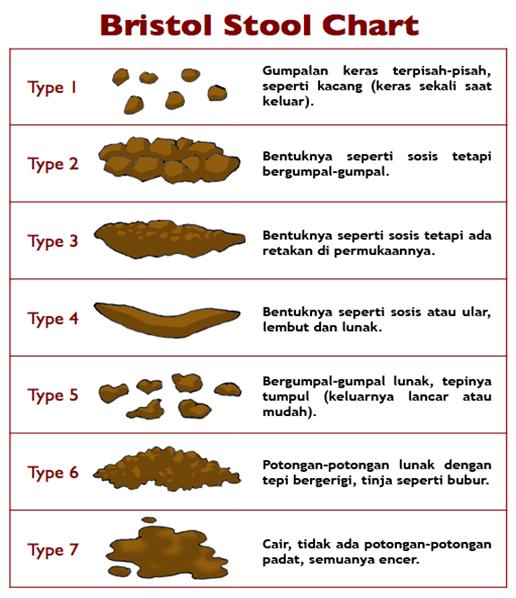 Bleeding from the lower gastrointestinal tract (with anal fissure, ulcerative colitis) is manifested by bright red streaks. If the source of bleeding is higher (esophagus, stomach), the stool turns black.
Bleeding from the lower gastrointestinal tract (with anal fissure, ulcerative colitis) is manifested by bright red streaks. If the source of bleeding is higher (esophagus, stomach), the stool turns black.
Occasionally, stool may be normal in color and consistency, but may contain microstreaks of blood. This condition must be identified and treated, as the child regularly loses blood (even in microscopic amounts), which can provoke the development of iron deficiency anemia.
A pediatrician orders a fecal occult blood test, mainly because of a suspected gastrointestinal food allergy. The intestinal mucosa in young children is very delicate, so it is easily damaged by allergens. Especially frequent appearance of blood microveins in the feces is associated with the action of such generally recognized allergens as soy, chicken egg, wheat, seafood, cow’s milk protein, peanuts.
Stools with mucus and strong odor
Mucus is a lingering secretion produced by the mucous membrane of the intestinal wall. With the help of mucus, the intestines are protected from the aggressive effects of the external environment, the pH of which differs from the norm in the acid or alkaline direction.
With the help of mucus, the intestines are protected from the aggressive effects of the external environment, the pH of which differs from the norm in the acid or alkaline direction.
Few people know that reduced mucus content in feces can also lead to problems – cause constipation. However, parents are more concerned about the high content of mucus in the feces of the child.
The appearance of a mucous admixture may be one of the signs:
- Acute respiratory infection. Young children, who are not yet able to blow their nose and cough, swallow nasal mucus and phlegm. This mucus is excreted along with the stool.
- Teething of milk teeth. At the same time, saliva is actively secreted, which can also contribute to the appearance of mucous secretions.
Mucus in a child’s stool should not cause great concern to parents, since most often this sign does not indicate serious health problems.
Pieces of undigested food in the stool
Pieces of food in the stool of a child also often cause anxiety in parents.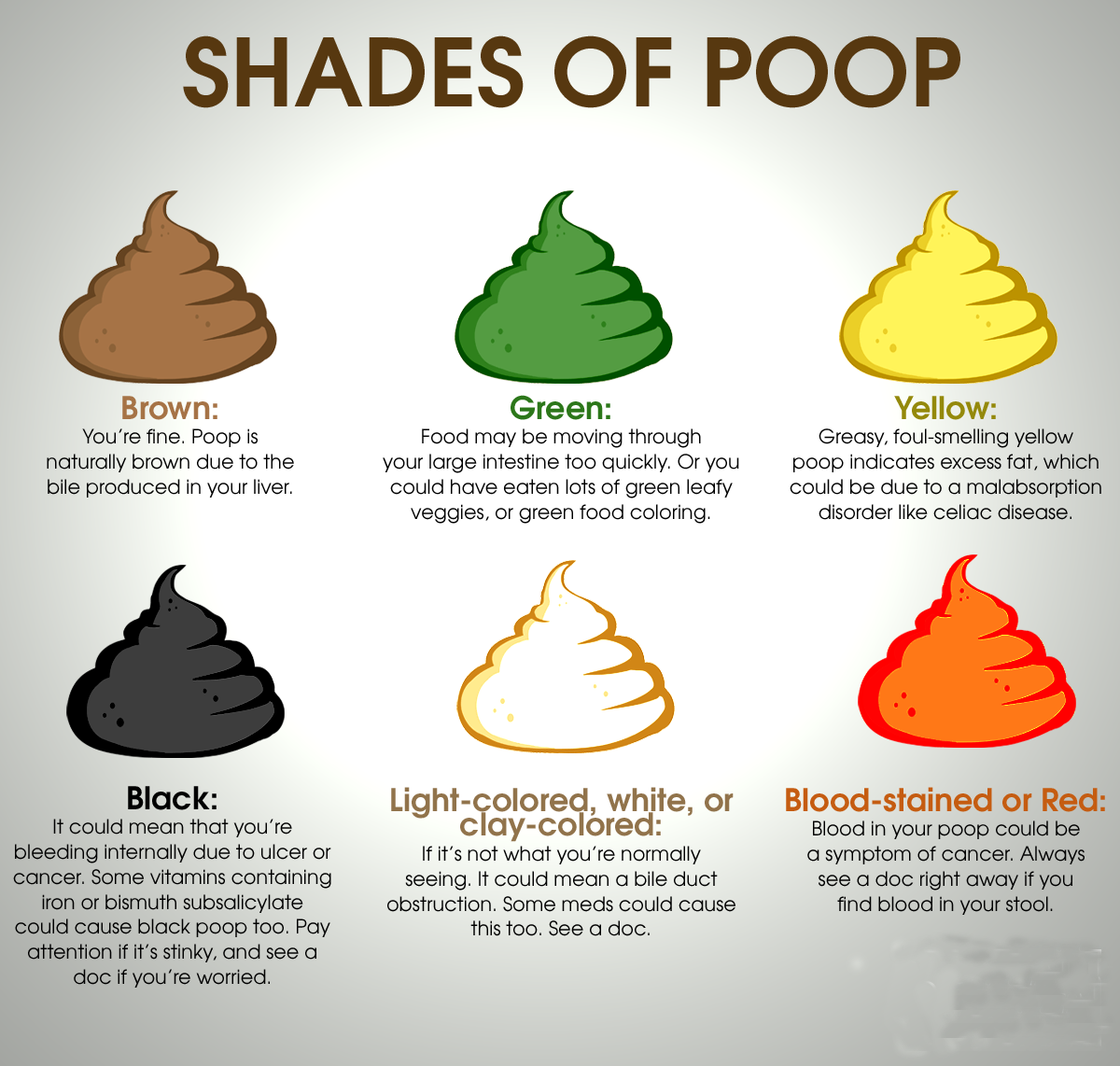 The logic of mothers and fathers is simple: if the baby could not digest the food to the end, then perhaps he has problems with the work of the stomach and he does not receive enough nutrients. However, such judgments are not entirely correct.
The logic of mothers and fathers is simple: if the baby could not digest the food to the end, then perhaps he has problems with the work of the stomach and he does not receive enough nutrients. However, such judgments are not entirely correct.
The causes of undigested food particles can be:
- Physiological (age-related) deficiency of enzymes. Some periods of a child’s development are accompanied by a temporary deficiency of enzymes. But this does not mean that the child does not receive enough proteins, fats and carbohydrates. As you get older, your enzyme levels will normalize and your stools will become smooth.
- Eating foods that, in principle, cannot be completely broken down in the human body. So, individual elements of fiber, which are rich in many vegetables and corn, are always excreted unchanged with feces. Small seeds of berries and some fruits (such as bananas) are also not digested in the gastrointestinal tract of children.
Bad smell
A child’s feces may acquire an uncharacteristic smell in the following cases:
- intestinal infection – the stool has a sharp, fetid odor;
- enzyme deficiency – putrid odor in combination with a change in the consistency of feces;
- constipation: stool that passes after a stool may have a different smell and texture.

What can I do to get my baby’s stool normal?
Let’s summarize. Treatment of stool disorders in babies depends on the causes of their occurrence.
If the mother clearly sees the connection of the changes that have occurred with too early complementary foods or the use of certain foods, it is only necessary to normalize the diet. With a high degree of probability, after 1-2 days, the child’s stool will return to normal.
Do not require treatment and changes in feces caused by teething, taking the necessary medications. The exception to the rule is antibiotics: they cause dysbacteriosis. Prevention of this condition with the help of pre- and probiotics should begin from the first day of taking antibacterial drugs.
In all other cases, it is best to consult a doctor. Especially “dangerous” options for staining feces in a child are grayish-white, black and with bright red streaks of fresh blood. Also, babies with any changes in the stool in combination with signs of an infectious disease need an urgent visit to the doctor: fever, weakness, abdominal pain, nausea and vomiting.




